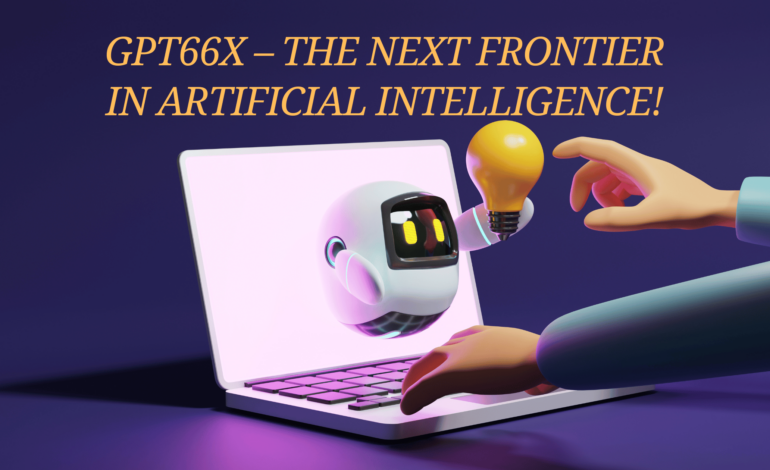
Gpt66x – The Next Frontier In Artificial Intelligence!
The groundbreaking potential of GPT66X, revolutionizing language processing with its advanced capabilities and unparalleled performance.
GPT66X is the pinnacle of AI language models, redefining natural language processing with its unprecedented scale and capabilities.
Discover the unparalleled potential of GPT66X, revolutionizing industries and redefining human-AI collaboration.
Introduction To The Gpt66x – Explore The Future Of AI Models!
The emergence of GPT66X marks a groundbreaking leap forward in artificial intelligence, opening up a realm of endless opportunities for the future of AI models. Developed as the latest iteration in the Generative Pre-trained Transformer series, this cutting-edge model epitomizes the forefront of innovation in natural language processing.
With its groundbreaking capabilities and expansive parameter set, the GPT66X is poised to redefine the boundaries of what AI models can achieve, offering unprecedented potential for transformative breakthroughs across diverse industries and sectors.
As we delve into the realm of the GPT66X, we embark on a journey into the future of AI models. Beyond being mere computational tools, these models are becoming indispensable partners in our pursuit of progress. From revolutionizing customer service to driving innovation in healthcare, education, and beyond, the GPT66X holds the promise of unlocking new levels of efficiency, productivity, and creativity.
Formation Of The AI – Genesis Of AI and Its Transformative Journey!

In the mid-20th century, trailblazing researchers embarked on the journey to develop machines that could mimic human intelligence, marking the inception of artificial intelligence (AI). AI has transformed significantly over time, progressing from symbolic AI to the emergence of neural networks and deep learning. This evolution has been fueled by advancements in algorithms, computing capabilities, and the accessibility of data.
In the present day, artificial intelligence is leading the way in technological advancements, deeply ingrained in almost every facet of our daily existence. As we venture into uncharted territories with AI, we are on a path towards a revolutionary transformation that has the potential to reshape society and open up new avenues for human advancement.
Its Comparison With Other Models – Crucial Steps In Understanding AI!
Research and Identify Comparable Models:
Begin by researching and identifying other AI language models that are comparable to GPT66X. Some prominent examples include GPT-3, BERT, XLNet, and T5. Each of these models has its own unique architecture, training data, and capabilities.
Understand Key Metrics for Comparison:
Familiarize yourself with key metrics used to evaluate AI language models, such as model size (number of parameters), training data size, computational efficiency, and performance on benchmark datasets like GLUE and SuperGLUE for natural language understanding tasks.
Evaluate Model Architectures:
Compare the underlying architectures of GPT66X and other models. For example, GPT-3 and GPT66X both use Transformer architecture, whereas BERT employs a bidirectional Transformer and XLNet introduces permutation language modeling.
Assess Training Data and Fine-Tuning:
Investigate the training data used for each model and whether they have been fine-tuned for specific tasks or domains. GPT66X, for instance, is pre-trained on a vast dataset but can also be fine-tuned for specific applications. In contrast, BERT is typically fine-tuned for particular tasks like question answering or sentiment analysis.
Compare Performance on Benchmark Tasks:
Evaluate the performance of each model on benchmark tasks relevant to your use case. This could include tasks like text classification, language translation, sentiment analysis, or question answering.
Consider Computational Efficiency:
Assess the computational resources required to train and deploy each model. This includes factors like training time, inference speed, and memory usage. GPT66X, with its large number of parameters, may require more computational resources compared to smaller models like BERT or T5.
Analyze Trade-offs and Use Case Suitability:
Finally, consider the trade-offs between model size, performance, and computational efficiency, and determine which model best suits your specific use case or application. For example, if you require fine-grained control over model outputs and the ability to generate long-form text, GPT66X may be the preferred choice despite its higher computational cost.
Applications Across Industries – Gpt66x Revolutionizing The Industry!
- Healthcare: Enhancing diagnostic accuracy, personalized treatment recommendations, and medical record analysis.
- Finance: Predicting market trends, offering personalized financial advice, and automating data analysis for investment decisions.
- Education: Personalizing learning experiences, automating administrative tasks, and improving educational materials.
- Customer Service: Enhancing chatbots, providing quick and accurate responses, and improving overall customer satisfaction.
- Legal: Assisting with legal research, drafting documents, and analyzing case data for lawyers and legal professionals.
- Content Creation: Generating articles, videos, and other content, improving content quality and relevance.
- Urban Planning: Analyzing data to plan infrastructure development, transportation systems, and city growth strategies.
- Research: Assisting scientists and researchers in data analysis, literature review, and hypothesis generation.
- Marketing: Personalizing marketing campaigns, analyzing consumer behavior, and improving targeting strategies.
Future Developments – Ongoing Research And Potential Advancements!
As we peer into the future of AI with the GPT66X, the landscape of technological innovation appears boundless. It furnishes boundaries of what’s possible, driving towards ever more sophisticated and capable AI models. With each new advancement, we edge closer to a world where AI seamlessly integrates into every aspect of our lives, offering unprecedented levels of convenience, efficiency, and insight.
One of the key areas of focus for future developments lies in enhancing the adaptability and versatility of AI models like the GPT66X. Researchers are exploring ways to fine-tune these models for specific tasks and industries. Moreover, efforts are underway to improve the ethical and responsible use of AI, mitigating potential risks and ensuring that these powerful technologies serve the greater good.
As we embark on this journey of discovery and innovation, the future promises to be brimming with possibilities, driven by the tireless pursuit of progress and the boundless potential of AI.
Frequently Asked Questions:
Q1: What distinguishes GPT66X from previous AI models?
The latest AI model, GPT66X, marks a major advancement in technology with its improved language processing abilities and an impressive parameter count of 660 billion.
Q2: What ethical considerations surround the use of GPT66X?
Ethical considerations include mitigating biases in training data, safeguarding user privacy, and ensuring transparency in AI-generated content.
Q3: Can GPT66X be fine-tuned for specific tasks?
Yes, GPT66X offers flexibility for fine-tuning to suit specific applications. By adjusting parameters and providing tailored training data, developers can optimize its performance.
Q4: How does GPT66X contribute to global collaboration and innovation?
GPT66X facilitates collaboration by breaking down language barriers and enabling seamless communication across diverse regions and cultures.
Conclusion:
The future of AI with its groundbreaking capabilities, is reshaping industries, driving innovation, and redefining human-AI collaboration. There are infinite opportunities and boundless potential.





